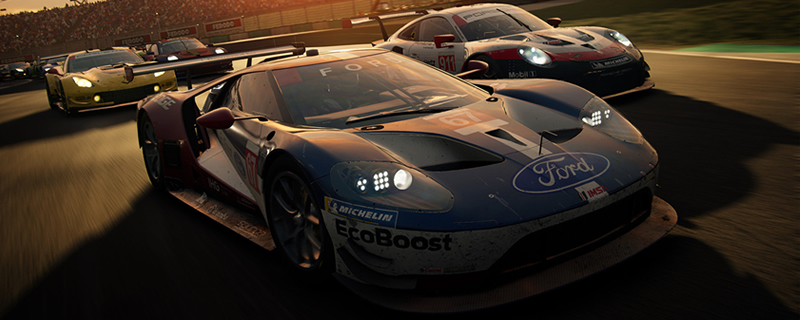GRID PC Performance Review and Optimisation Guide
Conclusion & Video – The upsides and downsides of GRID’s PC version Â
GRID’s release comes with some high expectations, and that doesn’t just come thanks to the series’ existing fandom. GRID makes use of Codemasters’ EGO engine, the same tech that powered both F1 2019 and DiRT Rally 2.0. With this in mind, gamers should expect a graphically capable racer, especially given the game’s move to DirectX 12 exclusively, removing DirectX 11 compatibility from the game’s default options. Yes, DirectX 11 can be forced, but it isn’t officially supported, and that’s a big step.
While GRID makes a move to DirectX 12 exclusivity, other areas of the game are downgraded when compared to games like F1 2019. For starters, GRID lacks support for AMD’s FidelityFX, SMAA and checkerboarding, all of which are available in F1 2019, Codemaster’s previous racing game release. On the options side, GRID can be considered downgraded when compared to F1 2019, but given this game’s move away from the hardware simulation audience, perhaps this level of streamlining was merited. That said, when SMAA and Checkerboarding are available in GRID’s configuration files, it is hard to see why they are absent from the game.Â
So does the move to DirectX 12 exclusivity benefit GRID? The easy answer is yes, though it is worth noting that some PC players are complaining about compatibility issues. Given what we know about F1 2019’s performance, we know that GRID will benefit from its use of the DirectX 12 API. This will be especially true when it comes to making use of heavily multi-threaded processors, or when targetting 100+ FPS framerates.Â
While GRID 2019 can run at 60+FPS on as little as a quad-core at Ultra High Settings. Higher framerates will be limited to CPUs with higher core/thread counts and clock speeds. Enabling hyperthreading on a quad-core will result in significant boosts to game performance in CPU-limited scenarios, and the move to six-cores will result in further performance boosts. When moving from a quad-core processor to a six-core processor with hyperthreading/SMT, we saw the following result. Our 99th percentile framerates were boosted from 75.9 FPS to 106 FPS. GRID’s average framerates also increased from 103.6 FPS to 161.7 FPS. This is clear evidence that the era of quad-core gaming is over. See page 6 for all of our CPU testing results.
One aspect of GRID’s performance that must be mention is how rain impacts framerates. While most races will lack any form of precipitation, rainy weather has the potential to lower framerates by 20% or more. This can fundamentally change the GRID’s performance levels in certain raced. The same thing applies to other Codemasters racers, like F1 2019. PC gamers must consider how their settings will impact the performance on both normal and rainy days. Hopefully, Codemasters can do something to help level-out performance in future EGO engine game releases, either by reducing the impact of their weather effects or by adding more effects to standard races to help level the playing field.  Effectively, PC gamers need to optimise their settings differently depending on the weather, which isn’t the best experience.
Another thing that’s worth mentioning is that GRID’s only anti-aliasing option is TAA; and that the effect has a substantial blurring effect on the game. While it does it job by eliminating Aliasing, some players will see the game’s loss of sharpness as a major downside. This makes the game’s lack of AMD’s FidelityFX, which F1 2019 features, all the more disappointing.Â
For most PC gamers, the best advice that we can give to increase F1 2019’s performance is to avoid the game’s Ultra High preset (See Pages 7 and 11). While the game is in motion, most gamers will be unable to notice the graphical difference between both presets, aside from the 30+% framerate boost that high settings can offer. This will be enough to make 1080p 60FPS gameplay too easy for most modern graphics cards, and 1440p gameplay easily achievable.Â
Like most modern games, GRID’s performance sweet-spot is at 1440p. When using our AMD Rx 5700, we found that moving from 1080p to 1440p resulted in a performance drop of less than 21% on average while offering gamers an 80% increase in pixel count. There’s more to framerates than pixel counts, and GRID is one of the many examples of this.Â
At 4K, GRID, like all modern releases, is a demanding title. Only those with the most expensive of rigs will be able to maintain 4K 60FPS framerates at Ultra High settings. That said, average framerates of over 60FPS are fairly easy to achieve at high settings. On page 11 you can see that even AMD’s RX 5700 and Nvidia’s RTX 2060 Super can achieve 60+ FPS average framerates at 4K High settings, even during heavy rain. During standard races, dips below 60FPS would be unusual for these cards at 4K High settings.Â
GRID 2019 is a game that’s designed to run well on most PC hardware, and while the game offers players less room for tinkering than F1 2019, it provides gamers more than enough graphical settings to scale the game from integrated graphics all the way to Nvidia’s RTX 2080 Ti. That’s a praiseworthy accomplishment for any developer. While the game’s Ultra High graphics preset cost more performance than its worth, we see most gamers being more than satisfied with GRID’s PC performance.Â
Video Review
You can join the discussion on GRID’s PC Performance and how to Optimise the game’s performance on the OC3D Forums.Â



